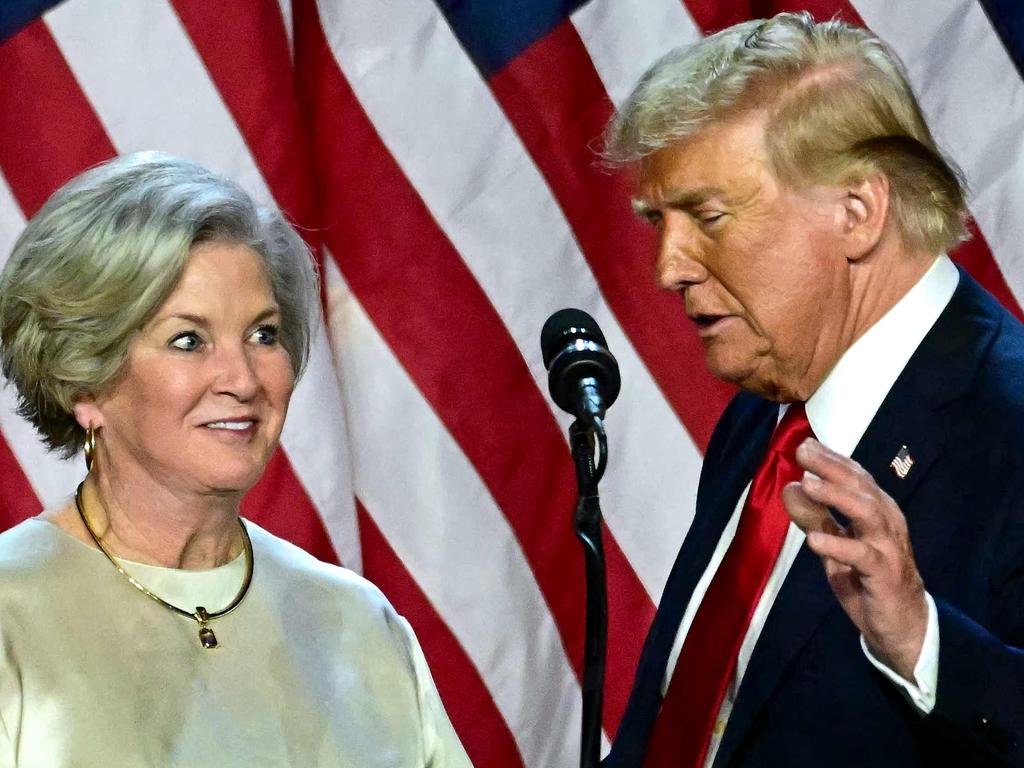
Despite the insistence from the press that the United States was doing great relative to the rest of the world, news of European or Chinese economic stagnation was of curiously little consolation to voters facing the daily sting of prices 20 per cent higher than a few years ago while wages had barely kept pace.

The yearn for churn. Incumbents everywhere have been turfed out in a year of global electoral upheaval driven by popular unease amid wars, huge uncontrolled migrations and the lingering traumas of the pandemic. America was unlikely to be an exception.
Political malpractice. Joe Biden’s refusal to do the right thing a year or more ago and acknowledge the ravages of time doomed his presidency. His belated substitution then doomed the Democratic Party with a candidate who had not won a single primary vote in her only previous presidential attempt and whose verbal soups betrayed a mental vacancy that was a continuous reminder of why.
The Man himself, of course. His outsized ego and endless hunger for self-aggrandisement may alarm and disgust many but they also reflect an astonishing resilience that propels a man through the constant fire of mass public loathing, the looming threat of jail time, an assassination attempt or two until, at the age of 78, he returns in triumph to the presidency.
But it is the orphan of defeat that tells us most about the meaning of this election. The rejection of the Democratic Party in 2024 is a repudiation for the ages that goes way beyond Biden’s debility or Kamala Harris’s vacuity.
It is a reckoning for a party that has been captured by cultural elites whose values have diverged from the concerns of regular, working-class voters.
It should come as no great surprise that a Democratic Party which has abandoned working class people would find that the working class has abandoned them.
— Bernie Sanders (@BernieSanders) November 6, 2024
While the Democratic leadership defends the status quo, the American people are angry and want change.
And they’re right. pic.twitter.com/lM2gSJmQFL
Bernie Sanders, the old-fashioned left-wing radical senator from Vermont, put it pithily in a post on X: “It should come as no surprise that the Democratic Party, which has abandoned working-class people, would find that the working class has abandoned them.”
This election accelerated the party’s long retreat from the economically disadvantaged constituencies of America.
In the great urban centres, in mid-sized cities, in small towns and rural communities with white working-class voters, support for the Democrats continued its steep decline.
According to the exit polls, Harris lost to Trump among voters without college degrees by 42 to 55 per cent. He recorded the highest proportion of this constituency ever for a Republican. In Ohio, a state Barack Obama won by five points in 2008, Trump won by 12 points.
Symbolically – and ironically – one of the last tribunes of the Democratic Party’s working-class voters, Sherrod Brown, lost his Senate seat there. Harris failed to hold on to the crucial Midwestern swing states of Pennsylvania, Wisconsin and Michigan, where non-college-educated white voters make up a higher than average share of the electorate, all won by Biden in 2020 but all claimed by Trump.

More striking, as Sanders pointed out, is that the abandonment of the party by white working-class voters is being followed by growing numbers of black and brown working classes. Trump won 46 per cent of Hispanic voters, the highest ever for a Republican, and 21 per cent of black male voters, the highest in 50 years. His support was again heaviest here among blue-collar voters, winning 34 per cent of the votes of people of colour with no college degree.
This trend produced some of the most remarkable changes in political geography. Across the country, Hispanic-majority counties shifted by an average of 10 percentage points away from the Democrats. Harris lost Starr county, Texas, which had voted Democrat in every election since 1892 and which is now heavily Hispanic. Trump won Baldwin county in Georgia, whose population is 42 per cent black.
How did the Democrats manage to alienate so many of their traditional supporters? The primary explanation is their increasing focus on cultural issues that emphasise identity over economics.
But this is compounded by a party establishment attitude that voters’ failure to sign up to the Democrats’ cultural priorities is reprehensible, reflective of a moral deformity among the working classes.

So voters who worry about uncontrolled illegal immigration or transgendered boys competing against their daughters in high school sports are simply bigots.
Two glaring examples of this disdain came late in the campaign. Last month Obama made headlines when berating black men in Pittsburgh for misogyny, essentially telling them the only reason some of them might not vote for Harris was because she is a woman.
And then there was a campaign commercial for Harris narrated by Julia Roberts, the Hollywood star, in which a woman walks into a polling booth seemingly under instruction from her cartoonishly burly (working-class) husband to vote for Trump but who, in the privacy of the booth, chooses to vote for Harris, to the smiling approval of an affluent-looking female voter.
So we have a neat picture of how Democrats now view the working class. They are either nasty bigots who need to be scolded out of their prejudice by those who know better or, more pityingly, helpless victims of abuse who make political decisions out of a fear of spousal battering.
The very idea that they might think for themselves and vote accordingly is simply unfathomable.
But, of course, that is exactly what they did on Tuesday.
The Times








The usual thousand fathers can line up to claim proud paternity of Donald Trump’s historic victory. The economy first; specifically, the return of inflation in the past four years after a decades-long absence.